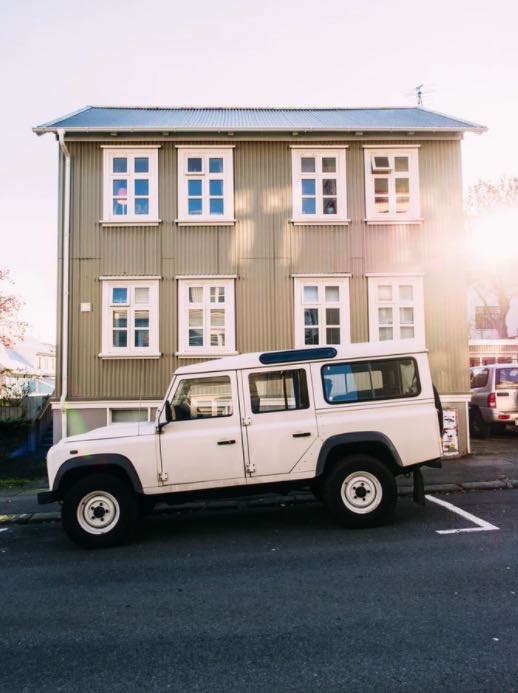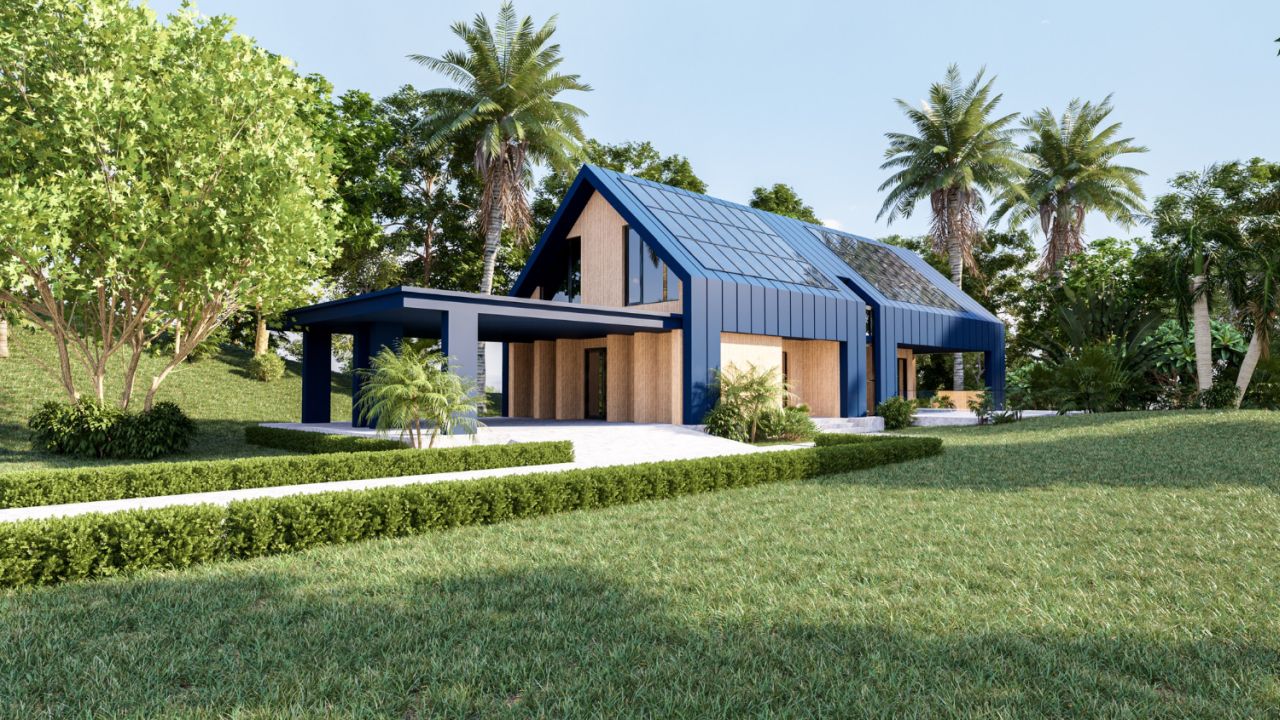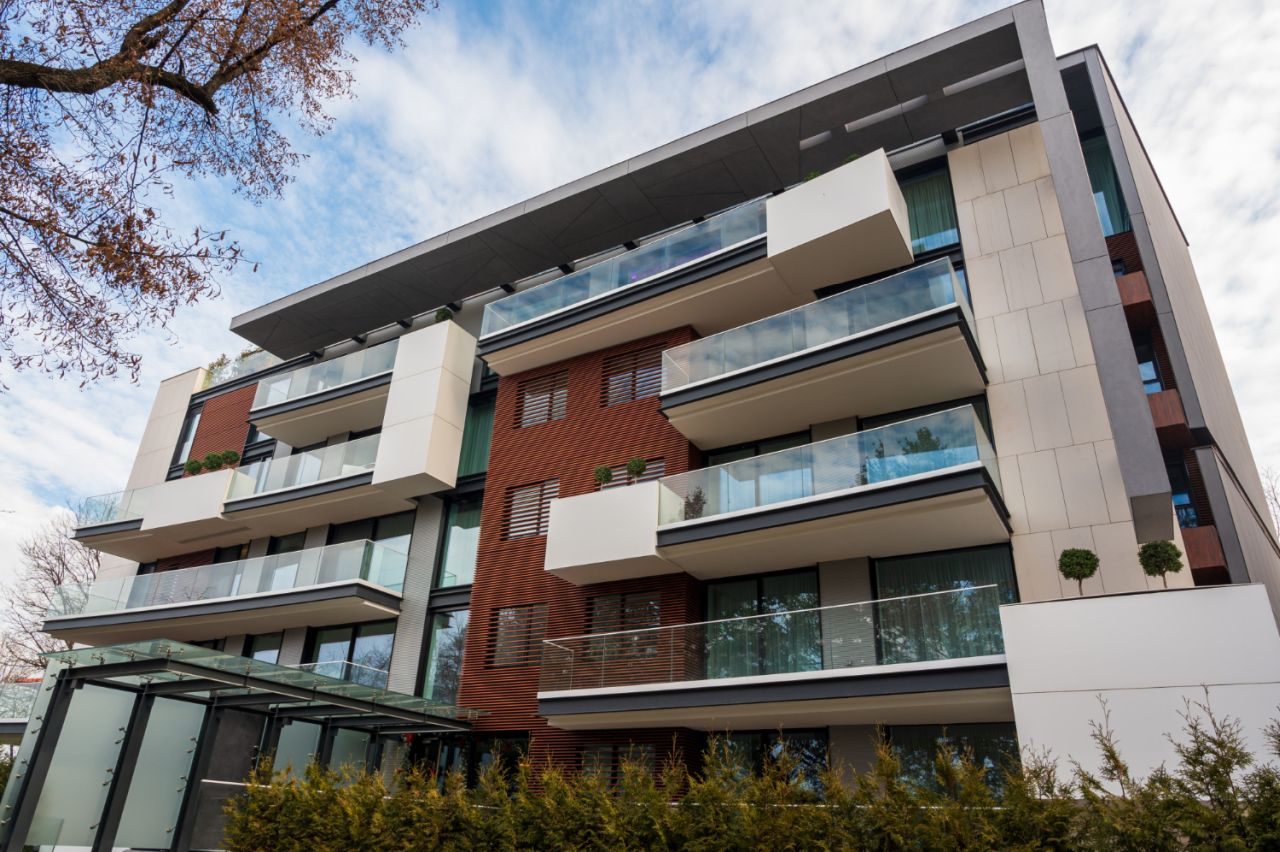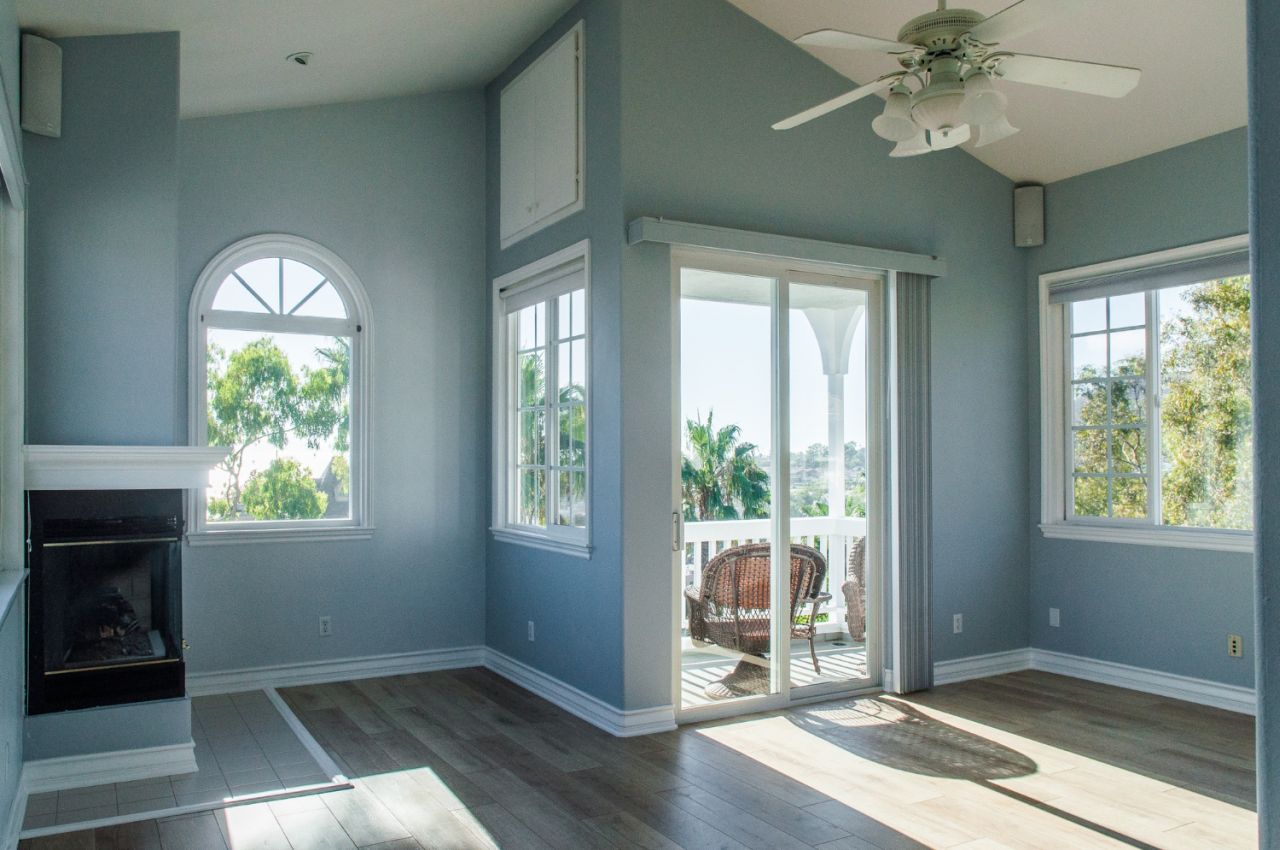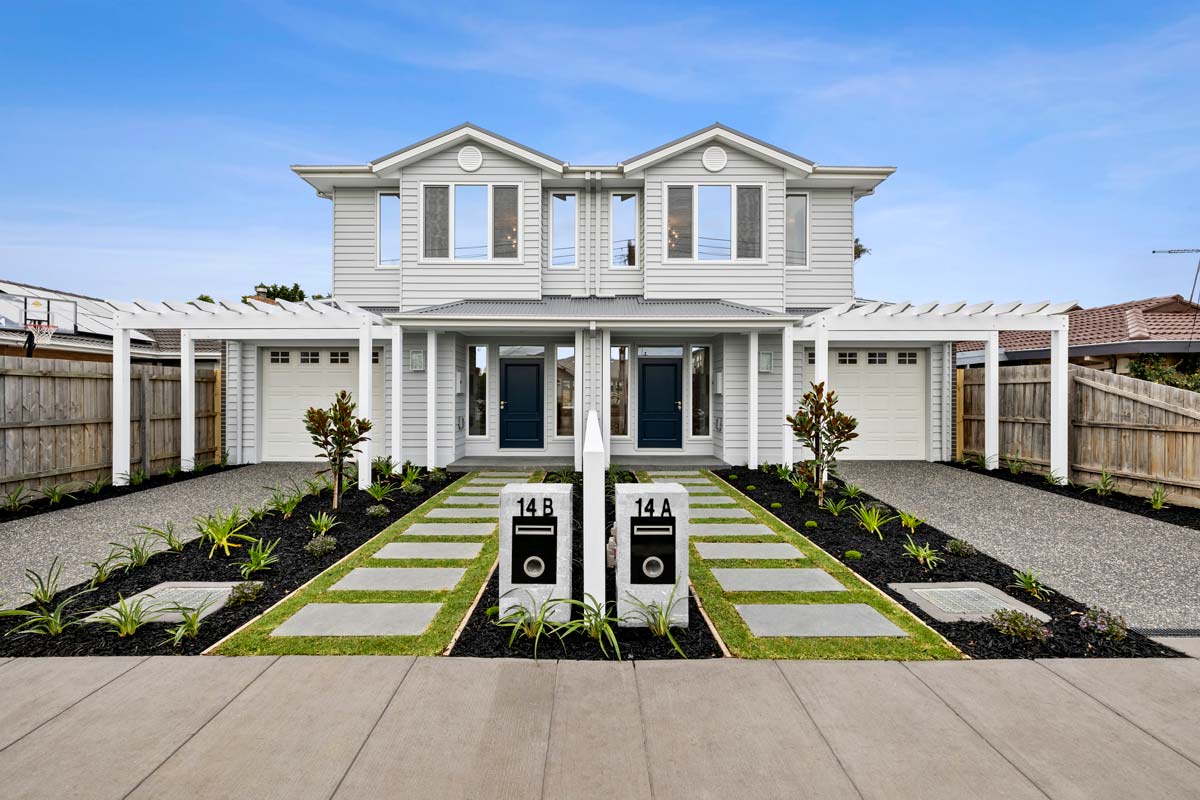If you're looking for a way to make money in the long run, a home that can be used by two families is a great option.
But what exactly does it mean? Houses designed for dual occupancy are two separate dwelling units sharing a common wall and driveway.
Many investors find this appealing because of the possibility of higher rental yield in addition to capital growth from the property's appreciation in value.
This article will discuss the financial and lifestyle benefits of owning a home with room for two families.
We'll cover everything you need to know about investing in a dual occupancy home, from owning two properties with one heading to multiple tenancy arrangements.
What Is A Dual Occupancy Home, And Why Does New South Wales Love Them?
New South Wales real estate investors are increasingly turning to dual occupancy homes, also known as duplexes, to maximise the value of a large lot. The laws of the state of New South Wales (NSW) permit dual occupancies in the form of two completely separate homes, two attached homes, or two individual houses on subdivided blocks.
Depending on your requirements, you have the option of choosing between two different floor plans. Because of their many advantages over the other kinds of investment real estate, multi-family dwellings present an excellent financial opportunity.
Buying a dual-family home can save you money compared to purchasing two single-family homes. You can save money on the cost of the land and the cost of construction by constructing a home that can be used by more than one family.
One of the best ways to boost your rental income is to convert your home into a duplex. Dual-occupancy homes are an excellent choice for investors because of the high returns they can generate.
There are many advantages to having a home that can accommodate two households. They are ideal if you want to live on one floor and rent the other up or for those who have a large family and need more space. Vacation and retirement homes are two other common uses for multi-family dwellings. They are growing in popularity in New South Wales due to the benefits they provide.
The Measurements And Layout Of The Properties
There are many factors to consider when deciding on the dimensions and arrangement of the properties. Single-family homes that are zoned for two families can be built side by side or hobbled, with one home wanting to share a wall with another.
Side-by-side construction, in which two separate buildings are placed next to one another, is a common design. Investors looking to maximise their investment's return or families desiring to live near each other will find this to be an ideal situation.
Staggered layouts, in which the two homes are constructed one behind the other, are also common. If you value your personal space, this is the perfect solution, as each unit will have a separate entrance and no common walls.
The state of New South Wales mandates that all properties have vehicular access. Possible street frontage on two streets, in the case of a corner lot.
For narrower lots, Acrow's expert team can fashion a usable drive space for access from the back, meeting all zoning and building requirements in your area.
Considerations For Design
You can design a dual-occupancy home in any architectural style you like.
The Layout
Your needs, as well as your budget, will dictate the best choice of floor plan for a dual occupancy home. Subject to zoning and other council regulations, you can make them as big or small as you like and design them however you like.
- Acrow offers a variety of layouts for its dual-occupancy housing options, including:
- House plans for multi-family use in tight quarters
- Dual-occupancy, two-story
- Linked co-living spaces
- independent simultaneous use
- Unique creations
Traditional, colonial, and contemporary architecture are just a few examples of the many options available for dual occupancy dwellings. Brick, stone, and wood are just some of the available materials for the exterior.
Each Dwelling's Number And Type Of Rooms
Two bedrooms are the minimum for a dual occupancy home, but you can always opt for more with an extra bedroom or two. You have the option of having a combined living, dining, and kitchen space or having those functions separated.
It is important to consider how the property will be used in the future when designing your dual occupancy project. Remember that plans may change, so if one of the homes is intended to be a hangout for teenagers, a nursery, or a place for an elderly relative to live, that may not be the case forever. It's not hard to convert a bedroom into a study or office.
Outdoor Landscaping And Features
There is a lot of leeway for outdoor features and landscaping in dual-occupancy homes. Various options in design and finishing give you the freedom to craft the house of your dreams.
Driveways and garages are standard in dual-family dwellings, but a carport or covered patio are also viable options. There is a wide variety of landscaping from which to select, including gardens, lawns, and pathways. Two houses on the same block could share a swimming pool or other outdoor amenities.
The Benefits Of Investing in A Dual Occupancy Home
High-density housing options like dual occupancy homes, which feature two sedimentary layer dwellings on a single block, can appeal to owner-occupants, investors, and a wide range of renters.
There are a lot of upsides to having two people share a space. Due to eliminating the need for two different rates and body corp fees, investors can maximise their return on investment (ROI) from the property.
Popularity Is Increasing
More and more Australians are moving into urbanised inward and middle-ring areas. However, they still involve close contact with intergenerational family members, driving demand for these buildings. Australians are learning more and more about the advantages of buying & living in both dual and single-occupancy properties.
Granny-flats, multi-unit, townhouse, and dual-key developments, also known as duplexes, multi-family, or multi-generational homes in the United States, are becoming increasingly popular in major cities like Melbourne and Sydney as investors and developers realise the positive cash flow and higher potential yields that can be achieved by having two dwellings established on one land title.
Dual Occupation Types
'Dual Occs' can be built as a duplex with two attached units or two independent homes. There is rental income potential across the board, but investors will want to consider how each property is unique.
- Typically this same size as a one-bedroom apartment, granny flats are found at the back of a fairly sizable yard. Both the construction and the acceptance of tenants are contingent on receiving council approval.
- Separate ownership of each unit is possible in a duplex because the two units are physically separated by a common wall or hallway.
- A dual-key home is one in which the keys to the main door, hallway, and possibly other rooms, such as the living room and kitchen, are all held by the same person. Typically, a landlord will rent out a locked-off portion of the property to a different tenant.
- While duplexes typically have shared walls and are adjacent to one another, dual occupancy properties do not.
It's not just older people who might feel safer with a younger relative living in the same house, but also students and young professionals. Due to the possibility of increased yield and investment growth over property cycles, dual occurs appeal to investors in certain areas. Return on investment can be maximised by renting out both properties. A homeowner could use the income from renting out the other unit to help pay the mortgage on the one they live in.
Investor Advantages
Instead of spending more money remodelling an older home, investors can save money by demolishing it and constructing two new homes on the same lot. In addition, they need only coordinate with a single construction and design crew throughout the project's duration.
In the past, investors have only had to pay stamp duty on the land itself, so there are tax advantages.
Dual-occupancy dwellings, or "dual occurs," differ from single-family homes in that they call for special planning, construction, and zoning approvals.
Noise reduction, privacy, and comfort features, such as additional master suites, bathrooms, closets, and living areas, are often necessary for multi-unit, duplex, or dual-occupancy dwellings.
Towns with high walk scores, typically near train stations, schools, and tertiary education institutions, are ideal locations for dual occupancy buildings, as are quiet suburban streets within shooting distance of infrastructure and amenities.
Average Returns On Single-Dwelling Investments
In a typical scenario, rent for a single-family home on a site could be $750 per week, while rent for a duplex on the same site could be $600 per week, for a total of $450 more weekly rent.
The land's size also matters, with larger parcels appreciating at a faster clip than regular apartments in high-density buildings. By allowing the owner to retain residency or title while selling or renting out at least each dwelling, dual occupancies give investors more leeway in the buying and selling processes.
Considerations Before Investing In A Dual Occupancy Home
Dual-use construction, like any other kind, necessitates prior study and understanding. You're putting your money and your feelings into this endeavour. Therefore, you must adhere to the advice below.
Understand The Dual Occupancy Building's Purpose.
Why build or finance a property with two households? Knowing your motivations for commissioning one is essential before beginning the search for a manufacturer.
Perhaps you want to live in a part of it while renting out the rest. Or maybe you need to sell both to ensure your financial stability.
Having a clear picture of the result will guide your next steps. The procedure for selling one while keeping the other differs from that for selling both.
Understand Dual Occupancy Costs Before Building.
The prices that builders advertise may seem attractive at first. However, they may have a tonne of hidden fees that you weren't expecting. It may cause budgetary instability or trouble securing necessary funds for construction. So, before you hire a contractor, make sure you've done your homework. Look for a company that gives you an up-front quote and answers every one of your questions.
Find A Builder Who Can Relieve Your Stress.
There is no denying the financial advantages of having a roommate. But they can also make you more anxious. The process of building even one house is time-consuming and demanding. Can you picture the hassle of constructing two houses at once?
That's why it's crucial to hire a builder who really can alleviate your worries. They must be able to assume full control of the operation. It would be best if you were kept up to date. However, if they have already resolved issues, building for dual occupancy will be much simpler.
Don't put money down before doing your homework.
Many times, new owners have rushed into buying but rather investing in dual occupancy properties without first doing their homework. That might cause issues in the long run.
Learn the ins and outs of the home, including who owns it, where it is located, how it faces, and more. It's also important to be aware of and prepared for any upcoming building or remodelling work on multiple properties.
Talk To Someone Throughout The Process.
There are a lot of moving parts in a dual occupancy build. It causes anxiety, which can be alleviated by receiving timely and accurate guidance and information. That can be obtained from one central company contact. They lose credibility if you repeat yourself every time they have a question and get transferred to a new person. Instead, it may increase your level of anxiety.
Before starting work with such a builder on a multi-family home, find who will be your main point of contact.
There are a lot of positives to having a home that can house two families. It allows you to construct a second dwelling specifically to rent it out. Or you could construct one in your yard to accommodate a growing family. Researching thoroughly before purchasing or constructing one is essential. It will guarantee the safety of your present and future.
Conclusion
Dual occupancy homes, also known as duplexes, are two separate dwelling units sharing a common wall and driveway. This article will discuss the financial and lifestyle benefits of owning a home with room for two families. New South Wales real estate investors are increasingly turning to dual occupancy homes, also known as duplexes, to maximise the value of a large lot. Dual-occupancy homes can save money on the cost of the land and the cost of construction by constructing a home that can be used by more than one family. They are ideal for those who want to live on one floor and rent the other up or for those who have a large family and need more space.
Vacation and retirement homes are two other common uses for multi-family dwellings. Acrow offers a variety of layouts for its dual-occupancy housing options, including house plans for multi-family use in tight quarters, dual-occupancy, two-story Linked co-living spaces, independent simultaneous use, unique creations, and traditional, colonial, and contemporary architecture. Each dwelling's number and type of rooms is the minimum for a dual occupancy home, but you can opt for more with an extra bedroom or two. The state of New South Wales mandates that all properties have vehicular access. Acrow offers a variety of layouts for its dual-occupancy housing options, including house plans for multi-family use in tight quarters, dual-occupancy, two-story Linked co-living spaces, independent simultaneous use, unique creations, and brick, stone, and wood as the exterior materials.
It is important to consider how the property will be used in the future when designing a dual occupancy project. There is a lot of leeway for outdoor features and landscaping in dual-occupancy homes, such as driveways, garages, carports, covered patios, gardens, lawns, and pathways. The benefits of investing in a dual occupancy home include eliminating the need for two different rates and body corp fees, maximising return on investment (ROI), and increasing demand for these buildings. Granny-flats, multi-unit, townhouse, and dual-key developments are becoming increasingly popular in major cities like Melbourne and Sydney as investors and developers realise the positive cash flow and higher potential yields that can be achieved by having two dwellings established on one land title. There is rental income potential across the board, but investors will want to consider how each property is unique.
Granny flats are found at the back of a large yard and require council approval. Duplexes have separate ownership of each unit, while dual-key homes have the keys to the main door, hallway, and possibly other rooms held by the same person. Dual-occupancy dwellings, or "dual occurs," differ from single-family homes in that they call for special planning, construction, and zoning approvals. Noise reduction, privacy, and comfort features, such as additional master suites, bathrooms, closets, and living areas, are often necessary for multi-unit, duplex, or dual-occupancy dwellings. Towns with high walk scores, typically near train stations, schools, and tertiary education institutions, are ideal locations for dual occupancy buildings.
Average returns on single-dwelling investments range from $750 per week to $450 more weekly rent. The land's size also matters, with larger parcels appreciating at a faster clip than regular apartments in high-density buildings. Dual occupancies give investors more leeway in the buying and selling processes by allowing the owner to retain residency or title while selling or renting out at least one dwelling. Before investing in a dual occupancy home, it is important to understand the purpose of the property, understand dual occupancy costs before building, and find a builder who can relieve stress. It is also important to hire a builder who can assume full control of the operation, and not put money down before doing your homework.
Researching thoroughly before purchasing or constructing a dual occupancy property is essential to ensure the safety of the present and future. It is important to learn the ins and outs of the home, including who owns it, where it is located, how it faces, and more. It is also important to be aware of any upcoming building or remodelling work on multiple properties. Talking to someone throughout the process can help alleviate anxiety and provide timely and accurate guidance and information. There are many positives to having a home that can house two families, such as being able to construct a second dwelling specifically to rent it out or to accommodate a growing family. Researching thoroughly before purchasing or constructing one is essential to ensure the safety of the present and future.
Content Summary:
- If you're looking for a way to make money in the long run, a home that can be used by two families is a great option.
- Houses designed for dual occupancy are two separate dwelling units sharing a common wall and driveway.
- This article will discuss the financial and lifestyle benefits of owning a home with room for two families.
- We'll cover everything you need to know about investing in a dual occupancy home, from owning two properties with one heading to multiple tenancy arrangements.
- New South Wales real estate investors are increasingly turning to dual occupancy homes, also known as duplexes, to maximise the value of a large lot.
- The laws of the state of New South Wales (NSW) permit dual occupancies in the form of two completely separate homes, two attached homes, or two individual houses on subdivided blocks.
- Depending on your requirements, you have the option of choosing between two different floor plans.
- Because of their many advantages over the other kinds of investment real estate, multi-family dwellings present an excellent financial opportunity.
- Buying a dual-family home can save you money compared to purchasing two single-family homes.
- You can save money on the cost of the land and the cost of construction by constructing a home that can be used by more than one family.
- One of the best ways to boost your rental income is to convert your home into a duplex.
- Dual-occupancy homes are an excellent choice for investors because of the high returns they can generate.
- There are many advantages to having a home that can accommodate two households.
- Vacation and retirement homes are two other common uses for multi-family dwellings.
- They are growing in popularity in New South Wales due to the benefits they provide.
- There are many factors to consider when deciding on the dimensions and arrangement of the properties.
- Single-family homes that are zoned for two families can be built side by side or hobbled, with one home wanting to share a wall with another.
- Side-by-side construction, in which two separate buildings are placed next to one another, is a common design.
- Staggered layouts, in which the two homes are constructed one behind the other, are also common.
- If you value your personal space, this is the perfect solution, as each unit will have a separate entrance and no common walls.
- The state of New South Wales mandates that all properties have vehicular access.
- Possible street frontage on two streets, in the case of a corner lot.
- For narrower lots, Acrow's expert team can fashion a usable drive space for access from the back, meeting all zoning and building requirements in your area.
- You can design a dual-occupancy home in any architectural style you like.
- The Layout your needs, as well as your budget, will dictate the best choice of floor plan for a dual occupancy home.
- Subject to zoning and other council regulations, you can make them as big or small as you like and design them however you like.
- Acrow offers a variety of layouts for its dual-occupancy housing options, including: House plans for multi-family use in tight quarters Dual-occupancy, two-story Linked co-living spaces independent simultaneous use Unique creationsTraditional, colonial, and contemporary architecture are just a few examples of the many options available for dual occupancy dwellings.
- Brick, stone, and wood are just some of the available materials for the exterior.
- Two bedrooms are the minimum for a dual occupancy home, but you can always opt for more with an extra bedroom or two.
- You have the option of having a combined living, dining, and kitchen space or having those functions separated.
- It is important to consider how the property will be used in the future when designing your dual occupancy project.
- Remember that plans may change, so if one of the homes is intended to be a hangout for teenagers, a nursery, or a place for an elderly relative to live, that may not be the case forever.
- It's not hard to convert a bedroom into a study or office.
- There is a lot of leeway for outdoor features and landscaping in dual-occupancy homes.
- Various options in design and finishing give you the freedom to craft the house of your dreams.
- Two houses on the same block could share a swimming pool or other outdoor amenities.
- High-density housing options like dual occupancy homes, which feature two sedimentary layer dwellings on a single block, can appeal to owner-occupants, investors, and a wide range of renters.
- There are a lot of upsides to having two people share a space.
- Due to eliminating the need for two different rates and body corp fees, investors can maximise their return on investment (ROI) from the property.
- More and more Australians are moving into urbanised inward and middle-ring areas.
- Australians are learning more and more about the advantages of buying & living in both dual and single-occupancy properties.
- Granny-flats, multi-unit, townhouse, and dual-key developments, also known as duplexes, multi-family, or multi-generational homes in the United States, are becoming increasingly popular in major cities like Melbourne and Sydney as investors and developers realise the positive cash flow and higher potential yields that can be achieved by having two dwellings established on one land title.
- 'Dual Occs' can be built as a duplex with two attached units or two independent homes.
- There is rental income potential across the board, but investors will want to consider how each property is unique.
- Typically this same size as a one-bedroom apartment, granny flats are found at the back of a fairly sizable yard.
- Separate ownership of each unit is possible in a duplex because the two units are physically separated by a common wall or hallway.
- A dual-key home is one in which the keys to the main door, hallway, and possibly other rooms, such as the living room and kitchen, are all held by the same person.
- Typically, a landlord will rent out a locked-off portion of the property to a different tenant.
- While duplexes typically have shared walls and are adjacent to one another, dual occupancy properties do not.
- Due to the possibility of increased yield and investment growth over property cycles, dual occurs appeal to investors in certain areas.
- Return on investment can be maximised by renting out both properties.
- A homeowner could use the income from renting out the other unit to help pay the mortgage on the one they live in.
- Investor Advantages Instead of spending more money remodelling an older home, investors can save money by demolishing it and constructing two new homes on the same lot.
- Dual-occupancy dwellings, or "dual occurs," differ from single-family homes in that they call for special planning, construction, and zoning approvals.
- Noise reduction, privacy, and comfort features, such as additional master suites, bathrooms, closets, and living areas, are often necessary for multi-unit, duplex, or dual-occupancy dwellings.
- In a typical scenario, rent for a single-family home on a site could be $750 per week, while rent for a duplex on the same site could be $600 per week, for a total of $450 more weekly rent.
- By allowing the owner to retain residency or title while selling or renting out at least each dwelling, dual occupancies give investors more leeway in the buying and selling processes.
- Home Dual-use construction, like any other kind, necessitates prior study and understanding.
- Why build or finance a property with two households?
- Knowing your motivations for commissioning one is essential before beginning the search for a manufacturer.
- Perhaps you want to live in a part of it while renting out the rest.
- Or maybe you need to sell both to ensure your financial stability.
- Having a clear picture of the result will guide your next steps.
- The procedure for selling one while keeping the other differs from that for selling both.
- It may cause budgetary instability or trouble securing necessary funds for construction.
- So, before you hire a contractor, make sure you've done your homework.
- Look for a company that gives you an up-front quote and answers every one of your questions.
- There is no denying the financial advantages of having a roommate.
- The process of building even one house is time-consuming and demanding.
- Can you picture the hassle of constructing two houses at once?That's why it's crucial to hire a builder who really can alleviate your worries.
- However, if they have already resolved issues, building for dual occupancy will be much simpler.
- Many times, new owners have rushed into buying but rather investing in dual occupancy properties without first doing their homework.
- That might cause issues in the long run.
- Learn the ins and outs of the home, including who owns it, where it is located, how it faces, and more.
- It's also important to be aware of and prepared for any upcoming building or remodelling work on multiple properties.
- There are a lot of moving parts in a dual occupancy build.
- It causes anxiety, which can be alleviated by receiving timely and accurate guidance and information.
- That can be obtained from one central company contact.
- Instead, it may increase your level of anxiety.
- Before starting work with such a builder on a multi-family home, find who will be your main point of contact.
- There are a lot of positives to having a home that can house two families.
- It allows you to construct a second dwelling specifically to rent it out.
- Or you could construct one in your yard to accommodate a growing family.
- Researching thoroughly before purchasing or constructing one is essential.
- It will guarantee the safety of your present and future.
Frequently Asked Questions About Dual Occupancy
What does dual occupancy attached mean?
An attached dual-occupant property is two homes on the same parcel of land connected/joined by a wall that usually extends the full length of the house. An example of this is a duplex.
What is dual occupancy in Australia?
Dual occupancy or 'shared living' dwellings are two separate homes built on one block of land that cannot be subdivided. These buildings can be attached or detached, but neither includes a secondary dwelling.
What is the difference between a double-attached and a single-attached house?
Single Attached means that a house shares a common wall typically on both sides of the property. A duplex can be considered as an attached one. It is composed of two dwellings in generally one structure. While on the other hand, a Single Detached property stands alone and with extra spaces of a lot around it.
Why is a duplex, not a good investment?
Investing in duplexes may not earn the returns that townhomes and condo complexes earn, but they present greater opportunities than single-family properties. Often, buying a duplex costs the same as a single-family dwelling, but you have two units to rent out instead of just one.
What is the difference between a duplex and a full duplex?
In the world of digital communication, full-duplex means that a system or circuit is capable of both transmitting and receiving data at the same time. In contrast, half-duplex means that communication can only go in one direction at a time.

